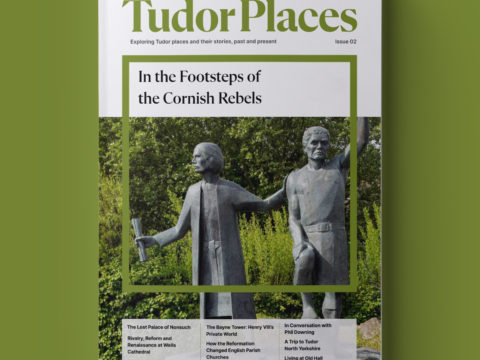Edward Seymour: Life Story
Chapter 17 : Accusations
During the summer of 1551, further clashes between Somerset and Warwick took place – Warwick had pursued a policy of peace with France, and the betrothal of the king to Henri II’s daughter, Elisabeth. Somerset did not approve the match, and suggested that Edward might marry his own daughter, instead. He began to be side-lined from council business and had to use his connection with Lord Strange, one of the king’s Gentlemen, to find out what was going on. He also, apparently, let people know that the economic problems that still dogged the country were Warwick’s fault – that he had advised against further debasement of the coinage, but been ignored.
The other bone of contention, which also put Somerset at loggerheads with the king, was the question of the Lady Mary’s conformity, or lack thereof, to the religious laws. Whilst protector, Somerset had given Mary permission to continue to hear the Mass in private. Warwick, and increasingly the king, objected to her being permitted to flout the law – especially as she refused to do so quietly, instead having more Masses served than previously, and encouraging her neighbours to attend her chapel.
Mary had powerful friends abroad, too – the Emperor Charles, and his sister, Mary of Hungary, the Regent of the Netherlands, were her cousins, and eager that she should have religious freedom. Mary of Hungary thought there might be a case for an invasion of England to rescue Edward from his ‘pernicious governors’, and, presumably, bring him back to the Catholic faith before it was too late.
With the prospect of Somerset having support from the conservative faction at home, who were Mary’s supporters, and Imperial interference, Warwick thought the time had come to dispatch the duke once and for all.
One of Somerset’s associates, Sir Thomas Palmer, informed Warwick on 7th October 1551, that Somerset was planning a dinner, at which Warwick, and his close associate, William Parr, Marquis of Northampton, would be assassinated by beheading, and that various of Somerset’s associates were poised to capture the Tower of London and take possession of the Great Seal. This, at least, was what Warwick told the king, and what Edward wrote in his journal. It is hard to believe that Somerset had any such bloody plans, but he may have had something less sensational in hand.
Warwick encouraged loyalty to himself by persuading Edward to grant a host of new titles. Warwick became Duke of Northumberland, and Henry Grey, Marquis of Dorset, who had never forgiven Somerset for passing him over in 1547, or for the death of Thomas Seymour, became Duke of Suffolk. Lord St John received the marquisate of Winchester, and Sir William Herbert emerged as Earl of Pembroke.
Not surprisingly, Somerset became nervous – a state exacerbated when a planned journey to the North was cancelled. The new Earl of Pembroke reassured him that all was well. Unconvinced, Somerset consulted Cecil, once his close friend. Cecil smoothly replied that if Somerset was not guilty of anything, he had nothing to worry about, but if he were guilty then Cecil could do nothing but ‘lament him’.
The following day, king and court moved to Hampton Court. Edward had been informed of what was to happen, Northumberland having assured him that Somerset was plotting treason. After dinner, Somerset was arrested, as was Palmer, as well as one of Somerset’s closest friends, Sir Thomas Arundel. Circulars were sent around the country, condemning Somerset as of ‘evil heart and discontented nature’. Somerset was sent to the Tower, as was his duchess and numerous others. The Imperial ambassador, Scheyve, was astonished, saying he did not know why Somerset should have involved himself in such a plot. Northumberland could reply only that Somerset had been planning the ‘wicked undertaking’ for some time. Fearful of unrest, the watch in London was extended from 6am to 6pm. Scheyvfe wrote that anyone who spoke in favour of Somerset or those arrested with him soon found himself under arrest.
On 22nd October, the London guilds were summoned to hear the accusations against Somerset – primarily that he had intended to take control of the Tower, devastate London and take himself off to the Isle of Wight. The ludicrous nature of the allegations was not lost on the Londoners, who did not believe a word of them. Although he had previously been unpopular in the City for the ostentation of Somerset House, the government of Northumberland had made Somerset look rather more appealing. Scheyfve noted that the citizens believed Somerset to have been falsely accused and that ‘the origin of the matter [was] to be sought rather in the Duke of Northumberland’s covetousness and fear of Somerset’.
William Crane, one of Somerset’s servants, who had also been arrested, now deposed that Northumberland and Northampton’s heads were to be ‘stricken off at Lord Paget’s house, and that the Earl of Arundel knew of the matter’. Arundel, on being questioned, admitted that he and Somerset had discussed ‘reformation of the estate of the realm’, but they had certainly never contemplated random executions. Northumberland himself went to the Tower to question Somerset, but there is no trace of Somerset’s replies.



